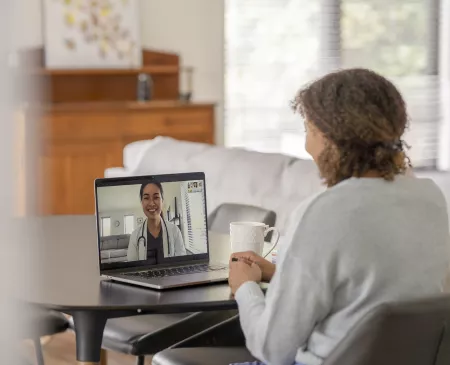The Buzz this Week
American Indian and Alaska Native (AI/AN) patients could soon see greater access to care, thanks to recent initiatives underway with the Indian Health Service (IHS). The agency, which is part of the U.S. Department of Health and Human Services, recently announced plans to expand its telehealth services across federal facilities to better serve the needs of AI/AN patients. IHS is also undergoing an IT modernization project, including fully replacing its homegrown electronic health record (EHR). IHS oversees 24 hospitals and 51 clinics that provide healthcare to 2.6 million AI/AN individuals in 37 states.
Newly confirmed IHS Director Roselyn Tso shared, “This expansion of telehealth will increase access to care, patient safety, continuity of care, quality of care, and ultimately patient satisfaction.” The telehealth expansion adds AA RingMD to IHS’s telehealth solutions, which is available across multiple devices and provides access to settings like homes or schools with low broadband availability.
A recent analysis of telehealth adoption trends from 2020 to 2022 confirmed that telehealth has established a prominent and lasting role in U.S. healthcare delivery. This research found telehealth adoption remains low in Alaska and South Dakota, which both have a large Native American population. The findings reemphasize the importance of IHS telehealth expansion to increase access, especially in rural and underserved communities. But for the expansion to be successful, it will require major investment in infrastructure for telehealth to be a viable solution to reach this digitally isolated population.
As the first permanent director IHS has had in nearly 2 years, Tso will help develop the healthcare policy for Native American Tribes and Alaska Native people. President Biden asked Congress to boost IHS’s total funding in 2023 to $9.1 billion, an increase of $2.9 billion from 2021, and proposed the funding mechanism shift from discretionary to mandatory, similar to other government agencies like Medicare. Congress approved $8.1 billion for IHS and $200 million for Urban Indian Health but failed to include advance appropriations or shift the funding to mandatory. IHS struggles chronically with underfunding and bureaucratic shortcomings, and deals with shortages in supplies, expired equipment, aging facilities, an insufficient number of providers, high vacancy rates, and too few hospital beds. Despite receiving $9 billion in COVID-19 relief funding, the effects of insufficient funding and need for large-scale organizational reforms plague the institution, even causing some Native American tribes to cut ties with IHS.
Why it Matters
The federal government itself has identified rampant challenges, with many of the programs that serve tribes and their members—including "historical discriminatory policies, insufficient resources, and inefficient federal program delivery," which contribute to significant disparities. "Native Americans [rank] near the bottom of all Americans in terms of health, education, and employment." AI/AN patients are directly impacted by the lack of IHS funding. Access to healthcare remains a challenge with more AI/IN individuals reporting no contact with a physician within the last year and fewer office visits per year compared to the rest of the U.S. In addition, 23% of Native Americans reported experiencing discrimination in clinical encounters, while 15% avoided seeking care for themselves or family members due to anticipated discrimination.
The health disparities and socioeconomic factors AI/AN communities endure compared to the rest of the population are staggering, with COVID-19 highlighting the inequities. AI/AN individuals have high rates of underlying comorbidities, like high blood pressure, diabetes, and cardiovascular disease, and are adversely impacted by the lack of access to equitable water and basic sanitation. In turn, this high-risk population was 2.5 times more likely to be hospitalized with COVID-19 and more than twice as likely to die from it. From 2019 to 2021, life expectancy for AI/AN individuals fell more than 6.5 years on average, plummeting to 65 years old, compared to the U.S. average of 76.
November is designated as American Indian and Alaska Native Heritage Month. The U.S. has a responsibility, legally and morally, to uphold its promise to provide healthcare services to Indigenous communities. In fulfilling this obligation, the nation must provide an effective healthcare system with access to comprehensive health services—with telehealth helping to expand access—toward the goal of improving the health of AI/AN individuals. Telehealth can close access gaps but will require intentionality to overcome barriers, with key topics like infrastructure, digital literacy, and culturally competent care to consider.
Related Links:
Arizona Republic:
COVID-19 Devastated Native American Health Care. Why Slash New Funding for It Now?
GAO:
Indian Health Service: Relief Funding and Agency Response to COVID-19 Pandemic
National Council of Urban Indian Health:
Biden FY23 Budget Request Includes $9.1 Billion in Mandatory Funding for IHS
Wall Street Journal:
U.S. Indian Health Service Struggles with Acquiring Basic Life-Saving Equipment
Editorial advisor: Roger Ray, MD, Chief Physician Executive.







